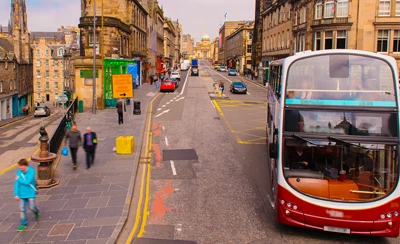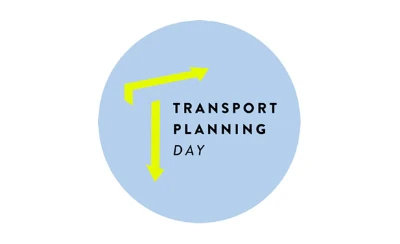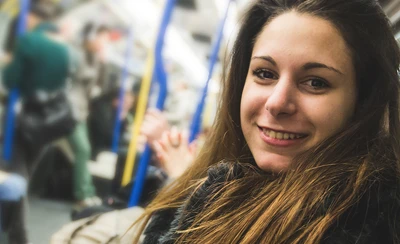TP Day Campaign 2021 - Developing a strategy that is inclusive for all
The Connecting Leeds Transport Strategy sets out a vision for mobility for Leeds, to be a city where you don’t need a car. It details our overarching objectives of tackling climate change, delivering inclusive growth and improving health and wellbeing and how we need transport to respond in order to achieve these. As a public body we ensure all our strategies, policies, services and functions, both current and proposed have given proper consideration to equality, diversity, cohesion and integration. Transport effects everyone in the city, whether you live, work, or visit Leeds. Although our strategy aims to improve transport provision and deliver positive outcomes it was acknowledged that there may be some negative impact because of the strategy on certain groups.
Our strategy builds on previous work and consultation that showed a potential differential impact on certain groups aligned to gender, age, race and disability. This thinking was further developed through extensive engagement with a wide range of groups such as Voluntary Action Leeds, Child Friendly Leeds, BME Hub, Disability Hub, LGBT Hub, Leeds Society for the Deaf and Blind, Physical and Sensory Impairment (PSI) Network, Womens’ Live Leeds, Elderly Action groups and various groups representing accessibility and usability.
In developing our strategy we have been cognisant that transport has the potential to have a differential impact on equality groups with regard to:
Gender: Research shows that women and men have persistent different transportation needs, travel behaviours and levels of access to services and infrastructure. Women tend to travel shorter distances, closer to the home, and make more trips; they travel for a wider variety of purposes; they walk more; they have less access to a car and are the main users of public transport, they make more chained trips; their travel patterns tend to be shaped as polygons as compared to the more frequent commuting trips made by men. Women are more sensitive to safety concerns and tend to self-limit their movements and activities because of perceptions of risk, in the UK, they are less likely to cycle. Women are also overrepresented in social groups with specific transport needs and greater transport disadvantage: older people, people with special needs, single parents, and working parents who take responsibility for most caretaking tasks. Women’s overall comparative disadvantage in terms of access to transportation negatively affects their professional development, economic status, leisure time, and personal wellbeing. [Source: genderSTE]
Disability: Differential access to the transport system and the effect of transport policies, particularly (but not restricted to) for those with physical and impairments, mental health issues or learning disabilities. Disabled people travel more frequently by bus than others, so public transport plays a vital role in ensuring that they can participate in community life and avoid social exclusion. They also may be affected to a greater extent by issues of reliability of public transport, modal integration (or lack thereof) and interchange and by issues such as overcrowding/ space availability. The availability of accessible infrastructure and walkable, level routes and access to information, including on board and at stops, will also have a differential impact on this equality group. Disability can lead to a greater reliance on private transport (own car or taxi, or lifts from friends/ relatives etc). Disability can also have a differential impact on journey times, distance and destinations, as well as modal choice.
Race: Differential access to the transport system and the effect of transport policies, particularly for Black, Asian and Minority Ethnic people are around impacts on access to employment, education and training, which are vitally important issues for BAME communities as a means of overcoming disadvantages in the job market. Studies have also shown a differential impact in terms of the impact of traffic and road safety. They are also underrepresented among cyclists – this impact may be compounded by race, age and gender. It is thought that enabling travel by active modes may particularly benefit some members of the BAME communities in addressing health inequalities, including Type II diabetes and cardio-vascular health.
Age: Both younger and older people are more at risk of being involved in a road traffic collision and suffer greater consequential effects – initiatives that contribute to road safety, especially of active modes, will have a beneficial impact on these sections of the population. Young people rely very much on public transport, although many have personal security concerns when using public transport and this is coupled with the fact that in terms of actual risk, they are the age group which are most likely to be the victims of violence and/or assault. Children exposed to traffic related air pollution are more at risk of asthma and child inactivity is a cause for future health concerns, which can be addressed through enabling the use of active travel modes. Many older people are not able to drive because health conditions related to their age or find the cost of running a car prohibitive. Older women are less likely to hold a driving licence so may lose access to a car when widowed. Like with disabled people, there will be a differential impact in terms of distance travelled (including to access public transport in the first place), reliability, overcrowding and the need to interchange or change modes. The presence and availability of evening and weekend services and infrastructure at stops/ stations will also have a differential impact in terms of the ability to access activities and leisure opportunities. The inter-district connectivity enabling access to local services has also been found to be particularly important to older people and disabled people.
Consultation on our strategy was undertaken during the pandemic through a variety of mechanisms including a dedicated consultation webpage, webinars, and dedicated meetings with stakeholder groups. Building on previous consultation feedback specific action was taken to engage with groups representing the protected characteristics. Leeds Involving People (LIP) were engaged to help reach seldom-heard groups within the community and utilised their links with existing groups, partnerships, networks, members, workers, and volunteers. They built upon the nine protected characterises under the Equality Act which were expanded to cover a fuller range of seldom heard groups. Due to the Coronavirus pandemic, LIP organised a series of three focus groups and a strategy reading group. All sessions were held virtually and could be accessed online or via a telephone. The strategy reading group, read through the strategy page by page over several sessions, to obtain detailed feedback on the proposals. The focus groups were 1-hour long sessions, to specifically go through points raised by attendees. Leeds Access and Usability Group were also consulted on the draft strategy who suggested further amendments, including a dedicated page recognising and highlighting the needs of disabled people and older people.
Within our strategy we have a number of key targets and themes. Each of these have been reviewed in the context of inclusion and it is interesting to note that for many of these there are positive outcomes if the strategy is implemented, however failure to deliver or indeed too greater an emphasis on one element could have negative outcomes. Consultation and engagement with users, stakeholders and operators is key and includes:
- Continued engagement with all groups and stakeholders through the implementation of the strategy and development of specific schemes and policies to ensure consideration is given to all protected characteristics. This includes undertaking an equality, diversity, cohesion and integration screening or assessment of individual schemes and policies and ensuring all groups are represented in the development of the projects and policies.
- Work with transport operators (bus, rail and taxi) to overcome barriers for groups using the transport network and ensure facilities are accessible.
- Supporting the West Yorkshire Combined Authority and the newly elected Mayor to review the costs of public transport, ensuring everyone is able to access reasonably priced fares.
Ultimately the success of our strategy will be the delivery of a transport network that aligns with our ultimate vision for Leeds to be a city where you don’t need a car and where everyone has an affordable zero carbon choice in how they travel.








